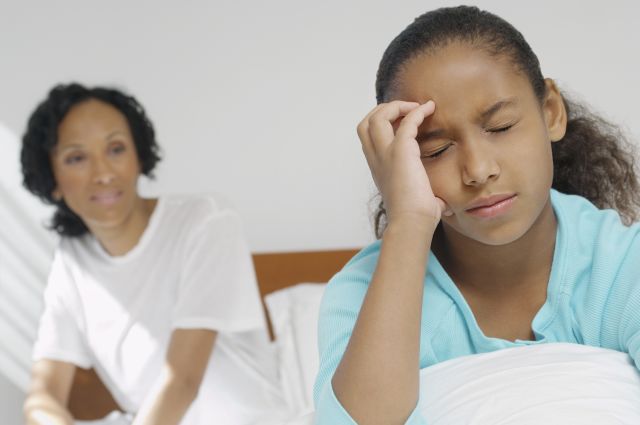Updated on January 6, 2023.
There’s good news for children who experience frequent, debilitating migraines—and for parents who have to endure seeing their kids in pain. Research shows that using cognitive behavioral therapy (CBT) for chronic migraines in children can greatly reduce the number of headaches kids have, as well as the disability they cause.
A lot of pain for little ones
You might be surprised to learn that up to 10 percent of kids have migraines, and nearly 2 percent have them at least 15 days each month. Kids’ migraines tend to be shorter than adults’, lasting only one to two hours, but they’re no less painful, and they’re often accompanied by abdominal pain, dizziness, and vomiting.
These headaches can make it hard to simply be a kid. Aside from keeping a child out of school and from participating in after-school or weekend activities, migraines can also lead to anxiety, because the child is constantly aware that a migraine attack could happen at any time.
Migraine headaches are particularly hard to diagnose in children because the symptoms are common to other conditions. And when they are diagnosed, healthcare providers (HCPs) usually prescribe medication designed for other purposes, such as antidepressants and antiepileptics. The only FDA-approved preventive migraine medication for children aged 12 to 17 is topiramate (Topamax), although evidence of its efficacy, when used alone, is limited.
Mind over migraines
A study published in JAMA in 2013 looked at 135 kids aged 10 to 17 who had migraines 15 or more days a month. The children were randomly assigned to groups receiving either 10 CBT sessions (which taught children ways to cope with their pain) or 10 headache education sessions. Patients in both groups were given the medication amitriptyline, an antidepressant drug shown to be effective at combating migraine symptoms.
At the beginning of the study, the kids averaged migraines on 21 out of 28 days, with a severe level of migraine-related disability. However, immediately after the first session, children in the behavioral therapy group had 11.5 fewer days with migraines, compared to just 6.8 migraine-free days for those in the headache education group. Twelve months later, 86 percent of the kids who received cognitive therapy cut their days with migraines in half compared to only 69 percent in the headache education group.
This has prompted researchers to tease out what might be going on in the brain during these sessions. A 2020 study published in Headache followed 18 teenagers as they went through eight weeks of CBT. The researchers examined the brain changes that occurred with CBT and found an improved connection between the frontal region of the brain and the amygdala. These brain regions help us process pain and figure out what to do about perceived threats. After each therapy session, cognitive pain regulation areas of the brain were activated in the brain’s frontal region. And these changes coincided with fewer migraines in the participants, which decreased from 15 to 10 migraines per month.
Researchers in a 2019 review in Headache, which looked at all of the available evidence on kids and migraines, noted that CBT has shown over and over to help kids with migraines, and they concluded that non-pharmacological treatments such as CBT should be considered as a first-line treatment for children with migraines. Most of the evidence showed it to be more effective than pill therapy alone, confirming that chemical treatment of symptoms is only part of managing this condition.
Other ways to help your child ease migraine pain
Aside from behavioral therapy, several other treatment approaches are available to relieve kids’ migraines.
- Avoiding triggers: The more aware your child is of their migraine triggers, the easier it will be for them to anticipate when they’ll get a headache. This can help them halt the pain before it becomes debilitating. Try to help them avoid certain foods that have been known to cause migraine headaches as well.
- Medications: Certain prescription medications can help stop a migraine in progress, and other drugs may be taken daily to prevent the headaches. The medications do come with the risk of side effects, so check with your HCP to see which one is best for your child.
- Rest: For many children, sleep alone can greatly reduce pain from migraines.
- Alternative remedies: Speak with an HCP for advice before trying these, as certain therapies carry significant risk for some people.
While watching your child go through a migraine can make you feel powerless, know that there are steps you can take to get relief and help put you both back in control of the condition.







